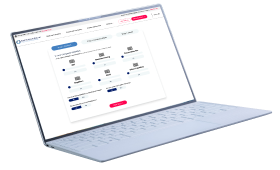
Understand your company's position and learn more about the options available
Require Immediate Support? Free Director Helpline: 0800 644 6080
Free Director Helpline: 0800 644 6080
Global supply chain delays and component shortages have led to manufacturing and production output being severely impacted over the past number of years. A truly global industry, manufacturing relies on a stable and reliable supply chain; without this, operational issues can quickly intensify. Manufacturers in the UK are facing huge uncertainty as they battle against a multitude of challenges.
Growing inflation and an ever-increasing cost of living makes for a slow and uncertain economy. This uncertainty has led to falling demand across a host of sectors as consumers put the brakes on large - yet unnecessary - purchases; all the while manufacturers are also contending with operational challenges when it comes to sourcing components and raw materials. Manufacturing companies are also navigating a changing international trading landscape, hard-hit by tariffs imposed by the US.
This has led to many manufacturing businesses to suffer a huge drop in cash flow, at the same time as facing the uncertainty not only as to when the industry will recover, but also how much worse the situation will get before embarking upon a recovery strategy is even possible.
Free 60 Second Test
For Ltd Company Directors
What are you looking to do?
Choose below:
If your manufacturing business is struggling with operational disruption or a tightening of cash flow, you may be considering whether the business has a future. Depending on how bad your company’s financial problems have become and how viable you see the business being over the long-term, there may be the chance that placing the company into liquidation is the most appropriate step to take.
Placing your manufacturing company into liquidation is a huge decision to take, and you must make sure you are fully aware what this entails and what it means for yourself, your employees, and your creditors. If your company is insolvent, however, it is absolutely vital you seek advice on liquidation even if this is something you are not keen on doing. This is because once you know your company to be insolvent, you have certain responsibilities and obligations to your company’s creditors; failing to adhere to these can lead to serious consequences further down the line.
A licensed insolvency practitioner will be able to discuss your options with you including explaining the alternatives to liquidation if your business is deemed to be viable and suitable for a rescue and recovery process. They will also give you the advice you need to ensure you adhere to your legal duties as the director of an insolvent company.
“Spoke with Chris who put me at ease straight away. He was very knowledgeable and listened intently to all my worries and concerns. Will definitely be using Real Business Rescue and advise anyone with business issues to give them a call.”
Diana
If you decide that the best option for your manufacturing business is to place it into a formal liquidation procedure, this will achieved through a Creditors’ Voluntary Liquidation – or CVL. As a formal insolvency process, a CVL can only be entered into under the guidance of a licensed insolvency practitioner. Once you appoint the insolvency practitioner, they will take control of settling the company’s outstanding affairs, including dealing with creditors on your behalf.
All company assets will be identified before being valued and sold, with the proceeds being distributed amongst outstanding creditors according to a designated hierarchy. The company will then be formally wound up and at the end of the process it will cease to exist as a legal entity. Any remaining company debt at this point will be written off unless you have provided a personal guarantee – or PG – for this borrowing. If you have, then the PG will crystalise at this point, and responsibility for repaying the debt will shift from the company to you as an individual.
Insolvent liquidation is unlikely to be something you want to happen to your company, however, in some instances it is the most appropriate option for all concerned. Employees will be made redundant, allowing them to claim redundancy if eligible, while all creditors will also be dealt with fairly and in accordance with the Insolvency Act 1986.
UK’s number one for director advice
We handle more corporate insolvency appointments than any other UK firm; demonstrating our commitment to helping directors and business owners in financial distress.
The team are available now - 0800 644 6080
Get a Quote Find Your Nearest Office
Even if your manufacturing company is currently experiencing problems, it does not necessarily mean that the business is beyond rescue. In fact there are a number of ways to save your manufacturing company, particularly if the business has a history of successful performance prior to the challenges it is currently up against.
If you are wanting to explore your options, a licensed insolvency practitioner is perfectly placed to help you understand the various solutions that exist, as well as advising you which option is the most appropriate for your company.
Turning around a failing business requires a depth of insight from the insolvency practitioner as to what caused the problems in the first place and the likelihood of the company returning to a viable and profitable position, as well as a commitment and desire on behalf of the company’s directors and shareholders to turn the situation around.
The first step is to get to the root of the problem and plan a solution from there. If your problems are down to a drop off in demand which is unlikely to return, there may be no realistic chance of turning the company around; if, however, financial concerns can be traced back to a period of supply chain disruption or lack of payment from debtors, restructuring options can be explored.
If you are struggling to manage your cash flow due to your invoices being paid late, or not in full, accessing a form of invoice financing could be what is needed to steady the ship. Alternatively, we can help you explore other funding options such as commercial loans or asset finance, thanks to our dedicated commercial finance team
For many manufacturing companies, however, the problems will go beyond this. If you have fallen behind in your obligations to HMRC, have accrued a significant amount of debt, or cannot cover your outgoings as and when they fall due, entering into negotiations with your outstanding creditors could be a solution.
You may be able to agree to pay your HMRC arrears through a series of monthly installments by arranging a Time to Pay (TTP) agreement. As long as your company has a good track record of paying its tax on time and in full, and you can demonstrate your ability to clear your arrears in 12 months, HMRC are often willing to give you this additional period to bring your account up to date.
However, if you owe money to a number of creditors, a formal and legally-binding insolvency solution known as a Company Voluntary Arrangement (CVA) may be more suitable. A CVA is entered into by an indebted company and its creditors, and typically lasts between 3-5 years. During this time the company must pay a fixed amount each month to the appointed insolvency practitioner (acting as nominee and supervisor for the CVA), who will then distribute this money to creditors according to a previously agreed ratio.
This monthly payment will be less than what was being paid prior to the CVA, however, creditors do also often benefit from a CVA as the likely alternative would have been the company being forced into liquidation where financial returns would typically be much less. Creditors (at least 75% by value) must agree to the CVA before it can be implemented, however, once consent has been given, the CVA becomes legally-binding on all parties.
If creditor pressure has got too much and you are being threatened with legal action, placing your manufacturing company into administration may be required. This process protects the company from threats of litigation as well as pausing any current legal proceedings. The company’s administrator, who must be a licensed insolvency practitioner, will use this time to devise a workable long-term plan which may involve internal restructuring, a sale of the company, or even liquidation if rescue is not seen to be possible.
For Ltd Company Directors
What are you looking to do?
Choose below:
We provide free confidential advice with absolutely no obligation.
Our expert and non-judgemental team are ready to assist directors and stakeholders today.

Understand your company's position and learn more about the options available

Find your nearest office - we have more than 100 across the UK. Remote Video Meetings are also available.

Free, confidential, and trusted advice for company directors across the UK.